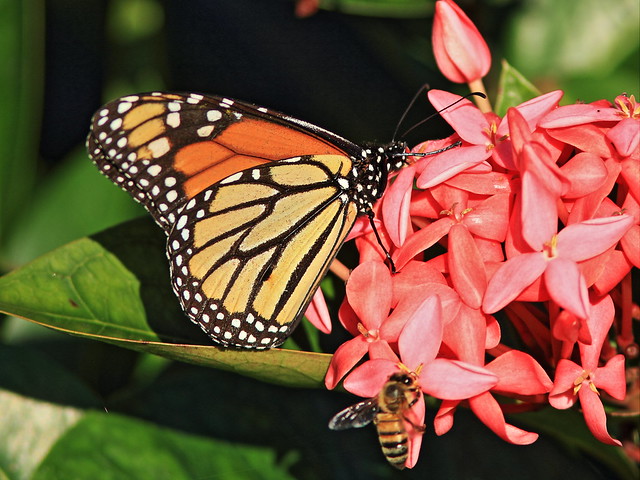South Florida has continued to experience unusual quantities of rainfall. Getting out early, we sometimes had to curtail our wetland walks as storms approached. On the day before we departed, thunderstorms gathered on all sides. On our way back home via the gravel road an ominous "double mushroom thunderhead" had formed in the southeast, over the city of Miami:
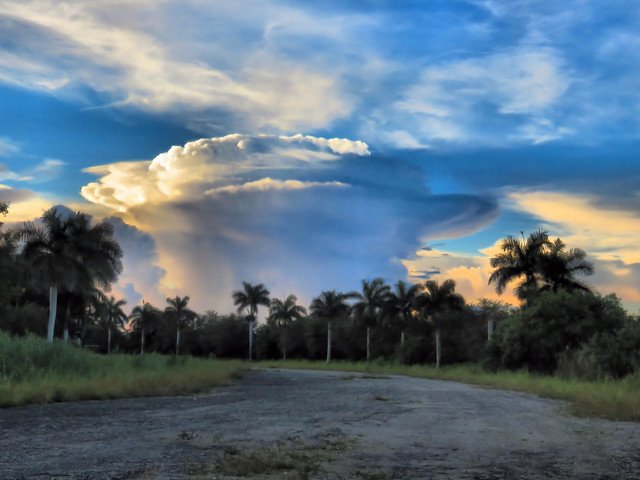
The early morning sun created a startling rainbow effect:
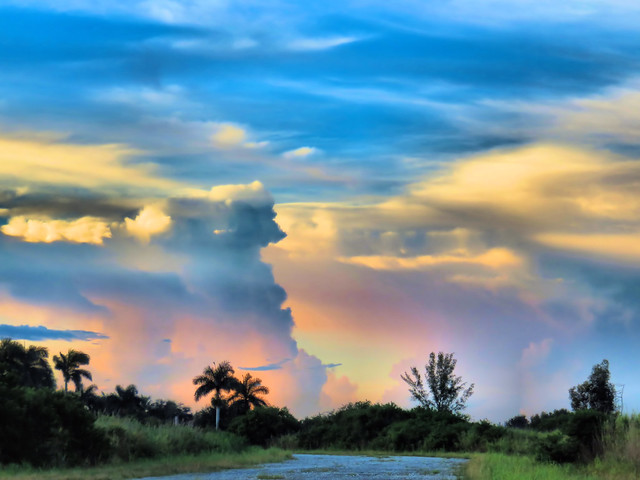
Before the winds picked up, a Green Heron reflected from its perch on a little rock island:
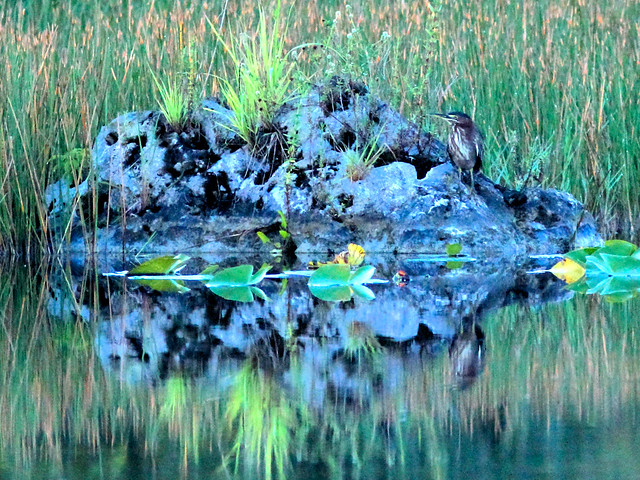
Both days after we arrived at our second home in northeastern Illinois we took morning walks at nearby Nelson Lake, a Kane County Forest Preserve. On the first day we explored the eastern prairie and surrounding woodlands. The weather was pleasant but the birding was slow.
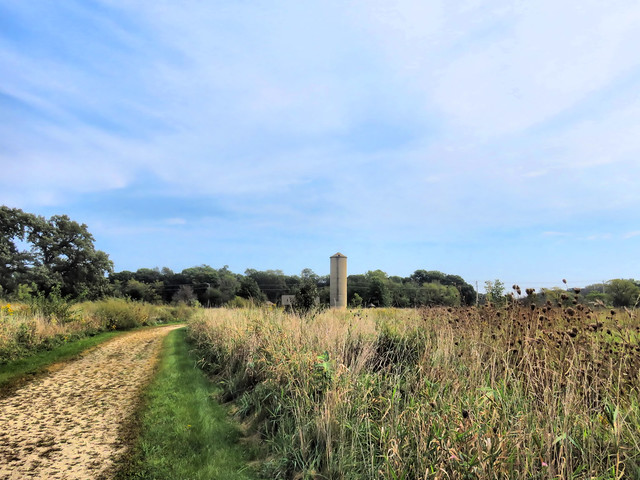
An observation deck overlooks the east side of the lake:
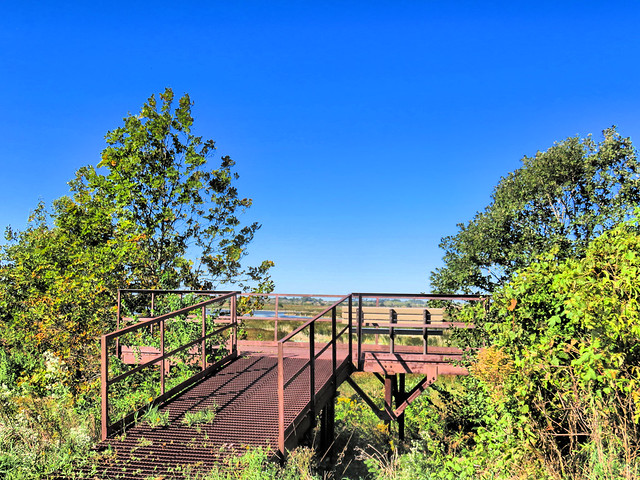
The view from the platform:
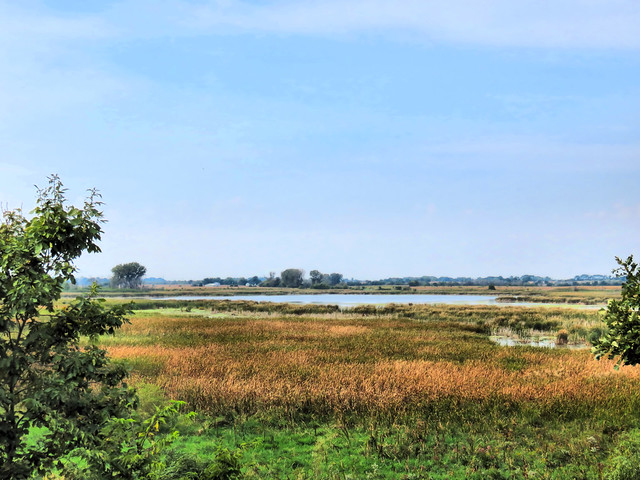
A Red-tailed Hawk flew towards us and passed right overhead:
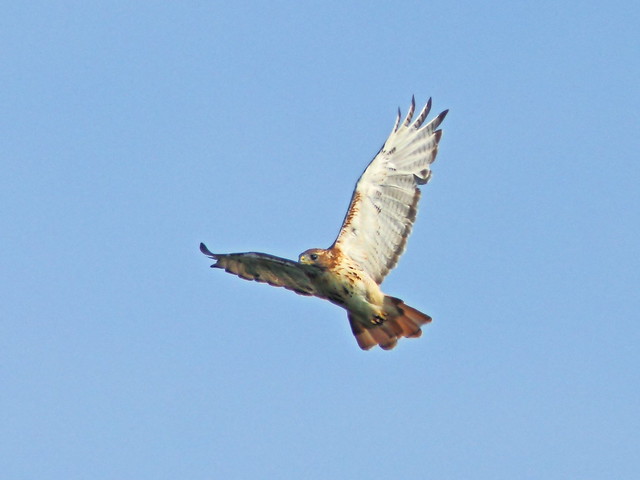
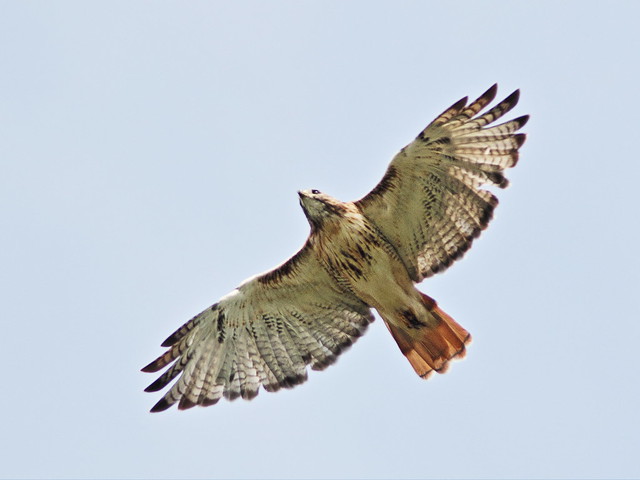
A Savannah Sparrow flew up from the path and then settled on a small shrub. They are usually active and restless, but this one allowed a rather close approach.
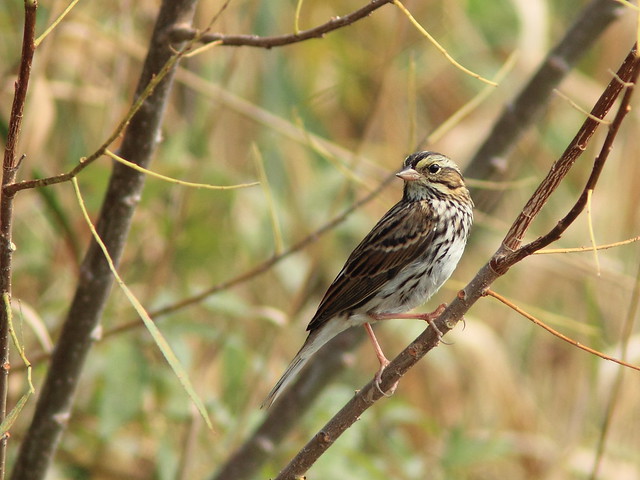
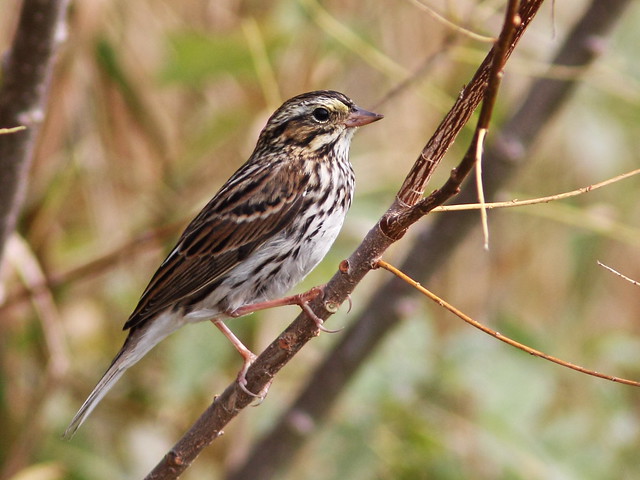
In the wooded area, photography was a bit of a challenge because of the dense foliage and dark shadows. This Downy Woodpecker was a case in point. My photos were soft but I liked the bokeh caused by the filtered light and the different postures assumed by the woodpecker as it foraged on some low-lying branches:
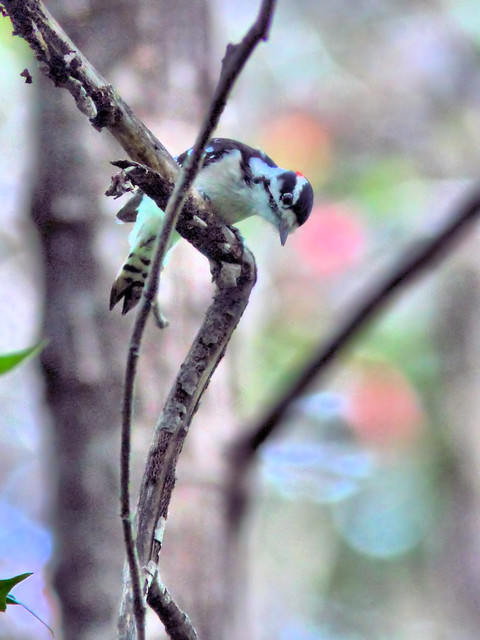
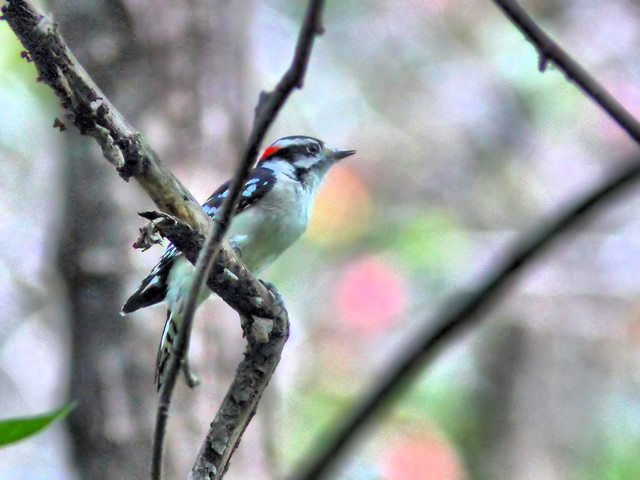
Yellow-Rumped Warblers are late migrants, and their arrival signaled that the best of the season had passed. It was difficult to pick them out among the leaves:
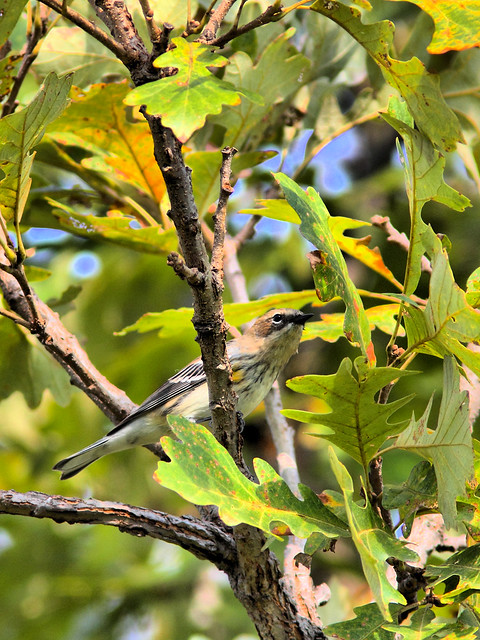
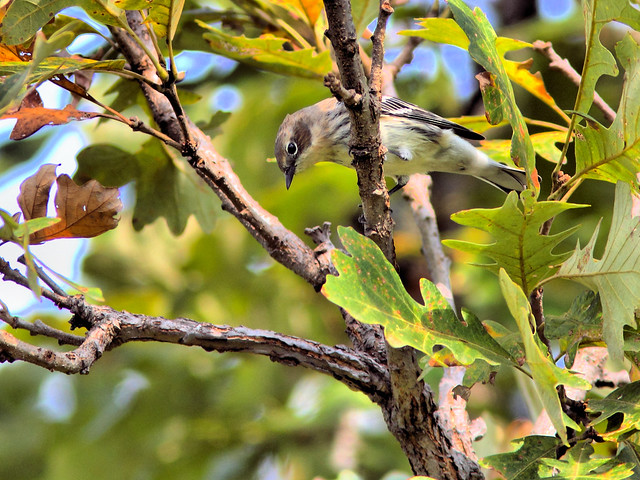
That night a cold front passed through. In mid-morning, after the rains let up we entered the preserve from the north We were not prepared for the cold 46 degrees (~8 degrees Celsius), such a contrast from Florida's heat and humidity. A family group of Sandhill Cranes provided a nice photo opportunity. The colt lacks the red forehead which distinguishes it from its parents:
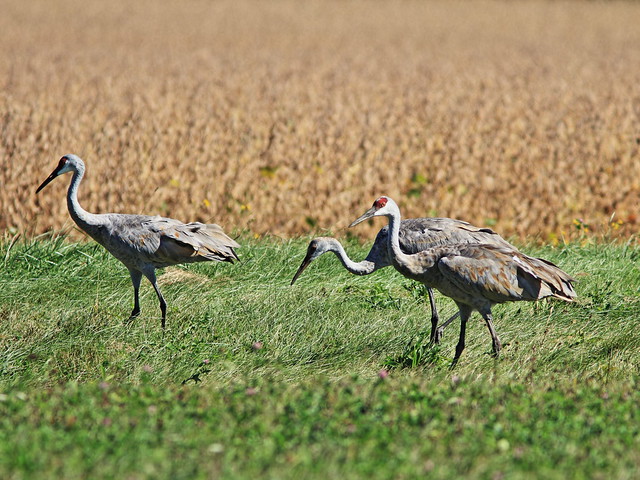
They suddenly decided they did not appreciate our intrusion:
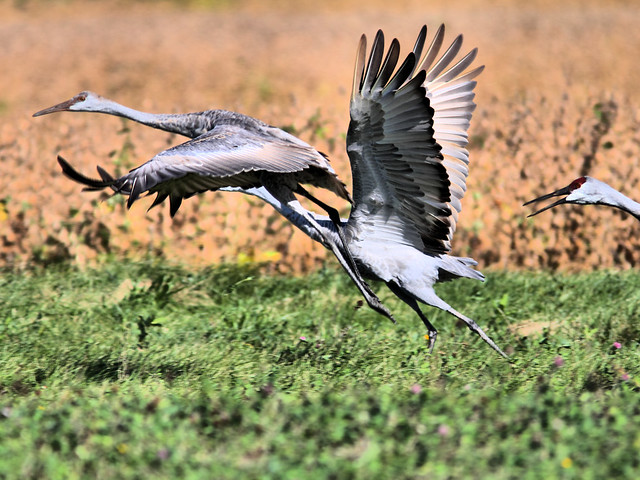
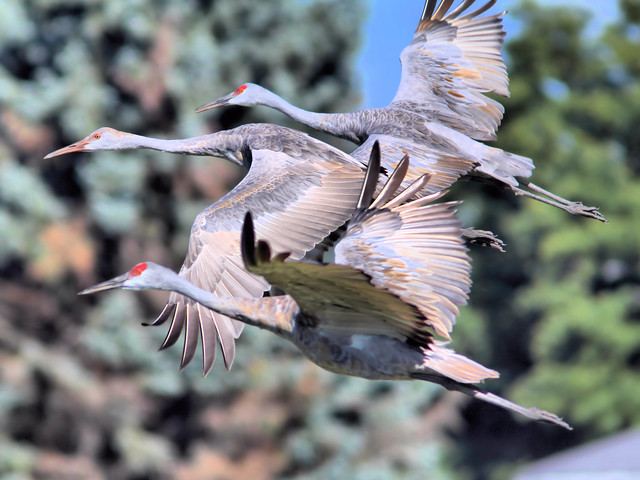
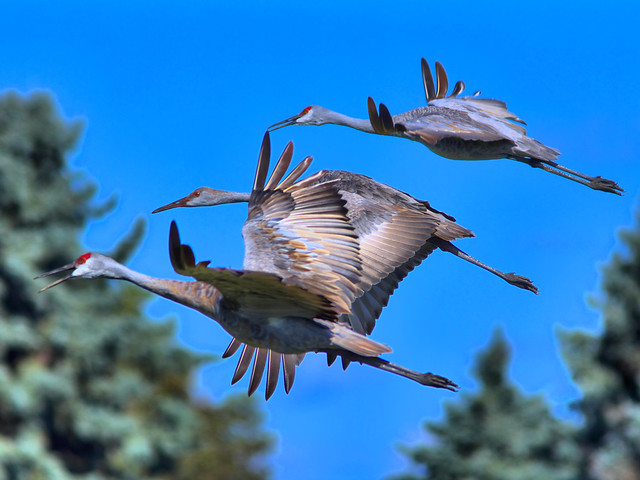
When birding is slow there is time to observe other items of interest and beauty, including colorful Milkweed Bugs:
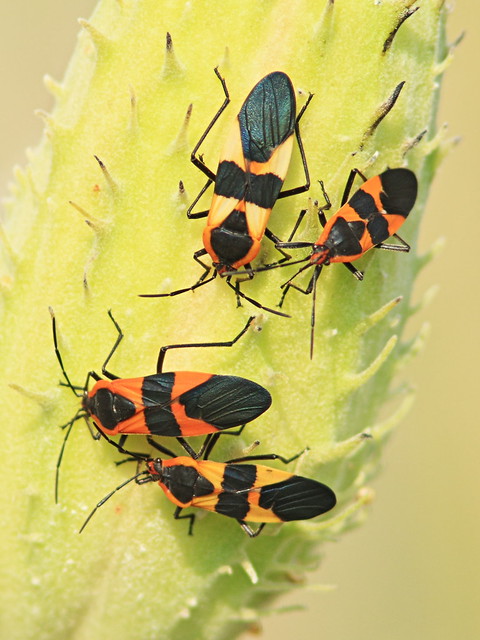
It was very windy and there were few butterflies but plenty of flowers, such as these rich purple New England Asters:
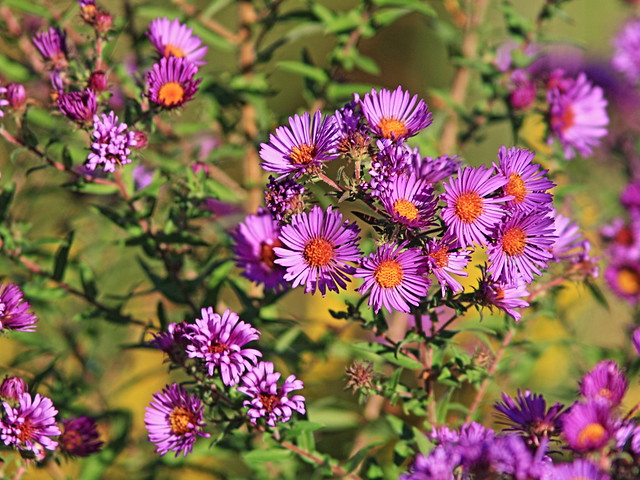
A honeybee collected pollen from a Heath Aster...
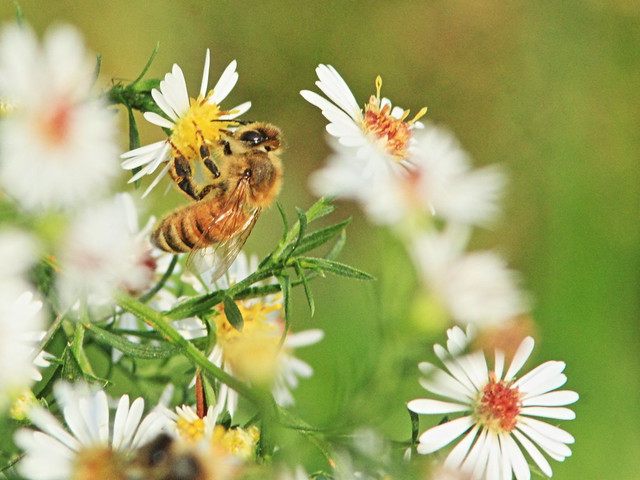
...and a Yellow Jacket also visited:
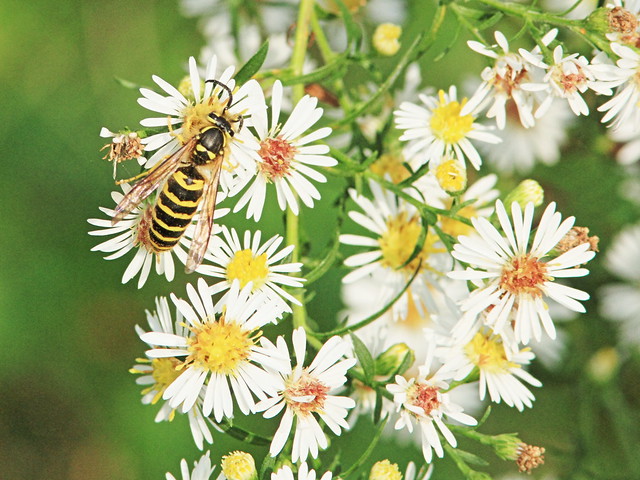
Our travel and temporary relocation have caused me to get terribly behind on correspondence, but rain is in the forecast and I hope to have more computer face time in the next few days. I will certainly be browsing all your great posts, and thank you for so many kind comments! (Now to make my Thursday morning deadline!)
= = = = = = = = = = = = = = =
Linking to Misty's CAMERA CRITTERS,
Linking to Eileen's SATURDAY'S CRITTERS,
Linking to GOOD FENCES by Tex (Theresa).
Linking to SKYWATCH FRIDAY by Yogi, Sylvia and Sandy
Linking to WEEKEND REFLECTIONS by James
Linking to BirdD'Pot by Anni
Linking to Wild Bird Wednesday by Stewart
Linking to Today's Flowers Friday by Denise
Linking to Wordless Wednesday (on Tuesday) by NC Sue
________________________________________________
Please visit the links to all these memes to see some excellent photos on display
________________________________________________
Being out early in the open nearly every day over the years has attuned us to astronomical events-- the oppressive heat of mid-morning Sun, the phases of the Moon, the shifting length of days, and even the angle cast by our shadows. Commonly at dawn, not a ripple mars the surface of the lake. On September 17 the Harvest Moon set on such a morning:
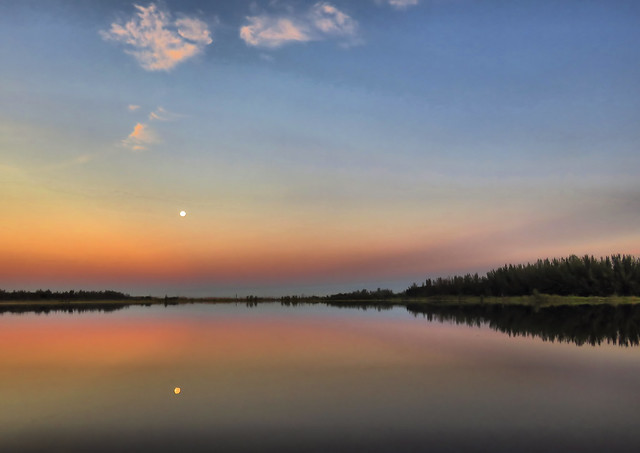
We start our walks facing due west, and follow a gradual 90 degree curve to true north. My first stop is at a small peninsula which juts out westward into the lake. Just after sunrise, it acts as a sort of sundial of the seasons. With the Autumnal Equinox approaching my shadow falls full on the path ahead.
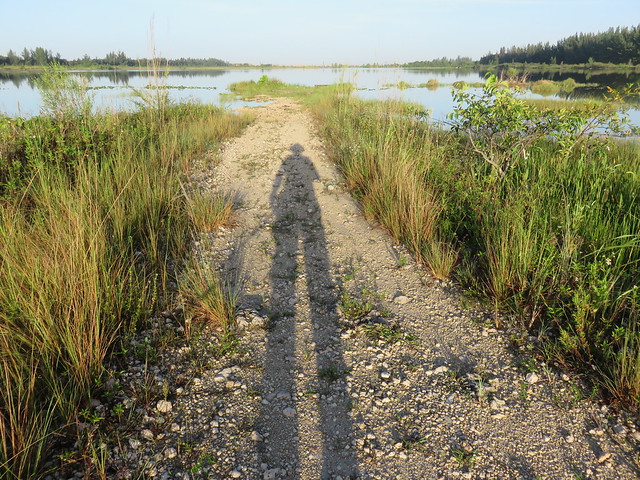
The sun will soon rise within the frame created by the back gate of the adjoining subdivision directly east of this location:
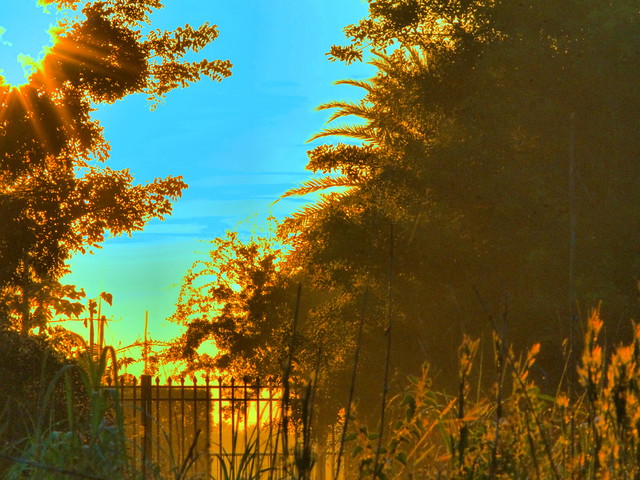
Migratory birds began appearing a few weeks ago, providing a departure from the uniformity of the summer bird population. Shorebirds are often the earliest arrivals. This year we saw few, as there are no extensive mud flats because of the high water levels. The little peninsula path has sometimes been under ankle-deep water.
Spotted Sandpiper showed up first, on September 12. Note its pronounced eyebrow line and how the white of its breast extends up in front of the shoulder:
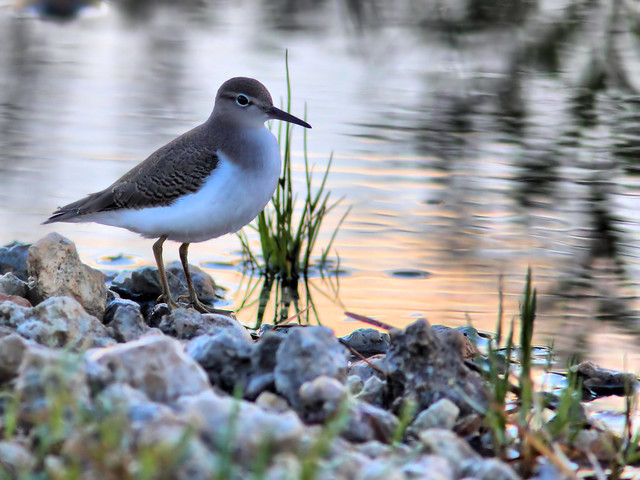
I heard the distinctive call of a Lesser Yellowlegs a few days earlier, but finally saw one flying over, on September 13:
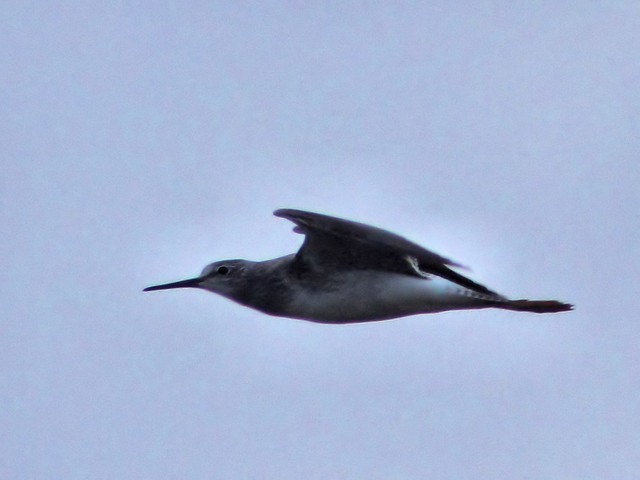
Here is a side-by-side comparison of Greater and Lesser Yellowlegs, taken back in 2014. In addition to its larger body size, the bill of the Greater Yellowlegs (in background) is longer and curves slightly upwards. Two Least Sandpipers may also be seen, to the left in this photo:
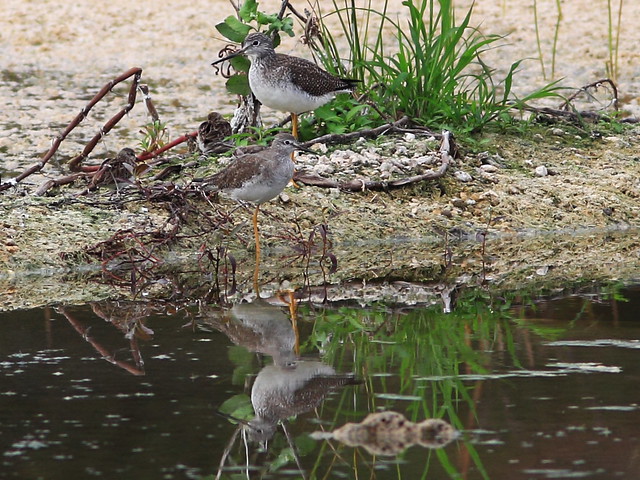
Least Sandpipers followed on September 15:
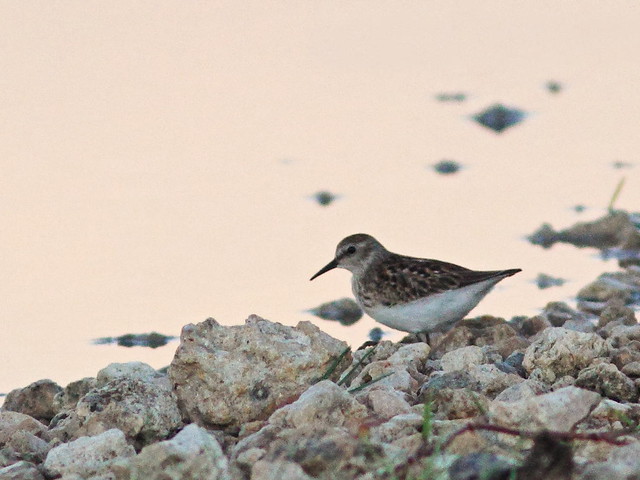
A Solitary Sandpiper appeared on September 17:

The Spotted and Solitary Sandpipers are rather similar in appearance during the winter, when the former species loses its breast spots. They are present in this unusual side-by-side comparison of the two species, back in the spring of 2015:
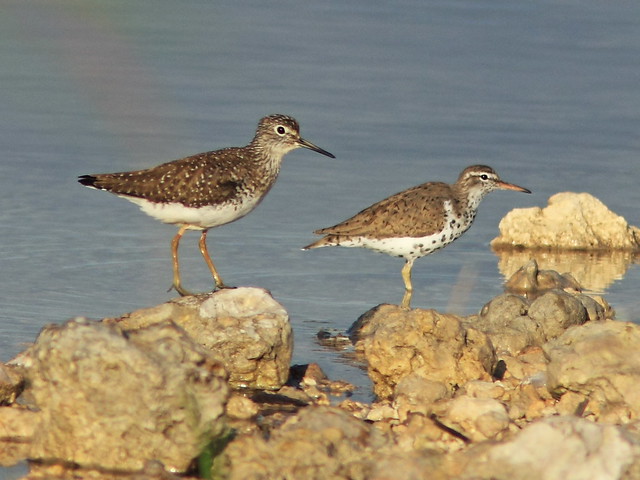
We have only two regular resident warbler species, the Common Yellowthroat and the Prairie Warbler. As fall approached, their populations were gradually augmented by arrivals from the north.
This is a female Common Yellowthroat in a Firebush (Hamelia patens) on September 17. The male has a striking black mask:
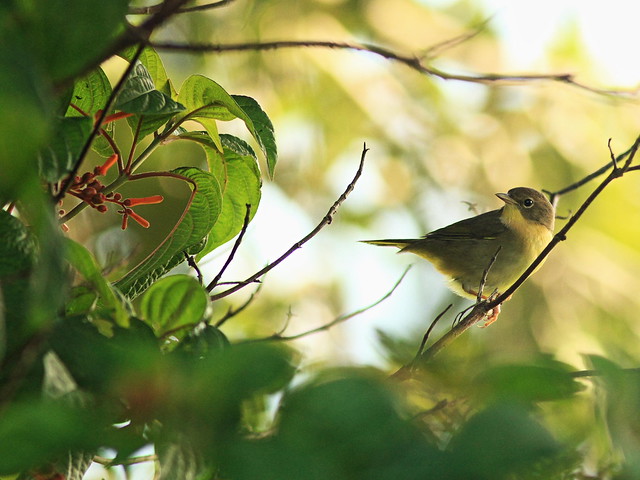
Prairie Warbler, also photographed on September 17:
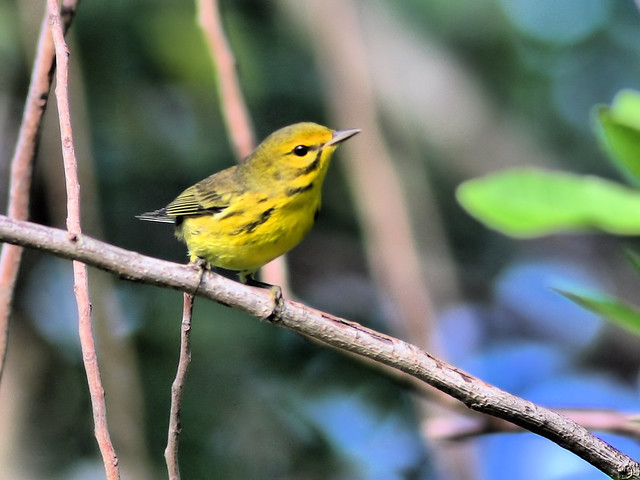
Other arriving warblers included the Black-and White Warbler (September 7)...
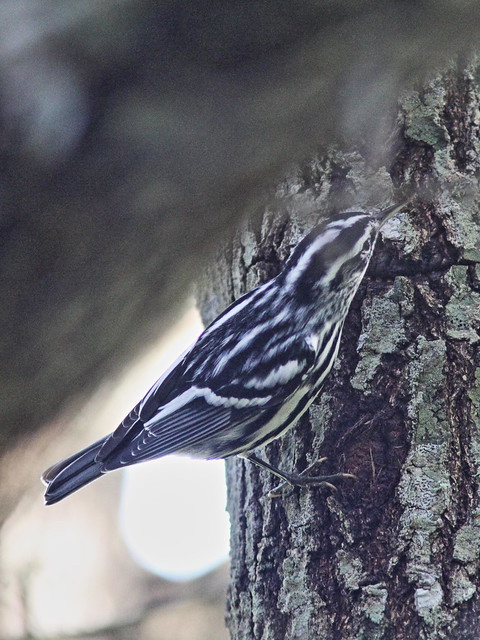
...Yellow-throated Warbler (August 20)...
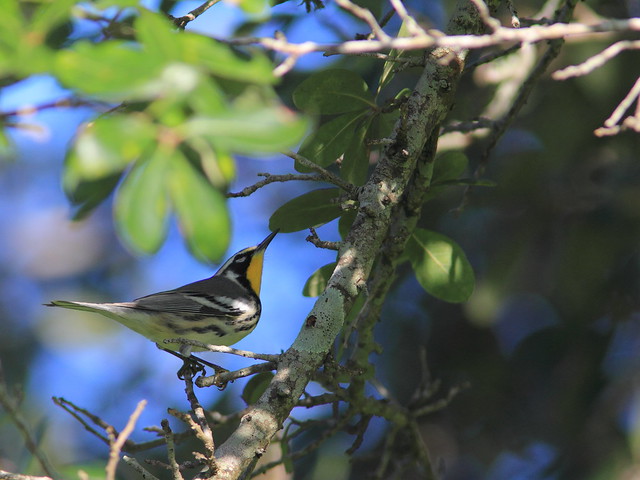
...an Ovenbird (September 17)...
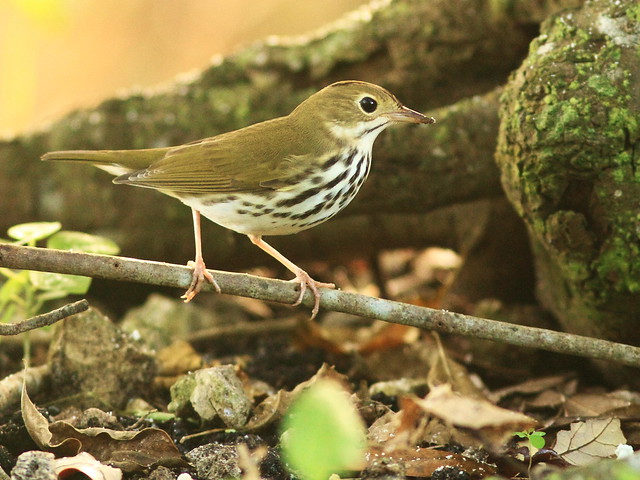
...Northern Parula (September 13)...
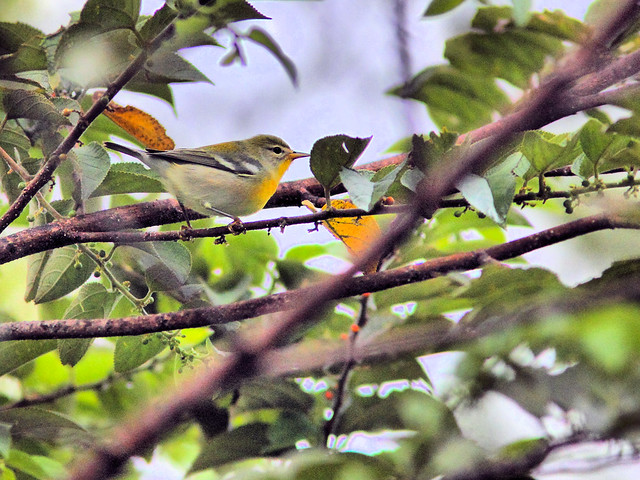
...and, among other warbler species, the American Redstart. This is an adult female, in which yellow replaces the fiery red in the adult male's plumage (September 16):
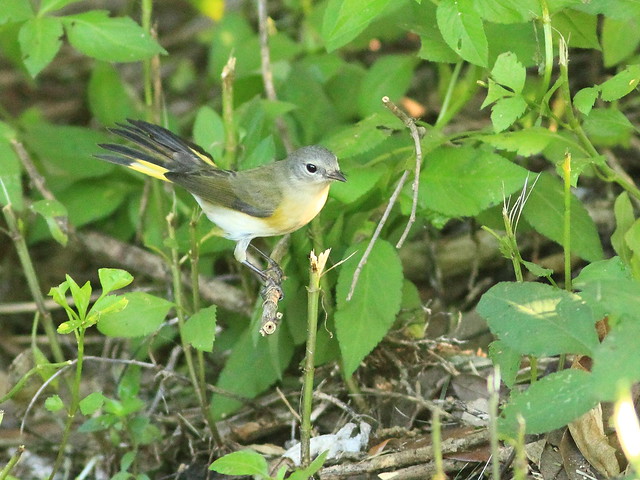
A Red-eyed Vireo provided a pleasant photo-op on September 17):
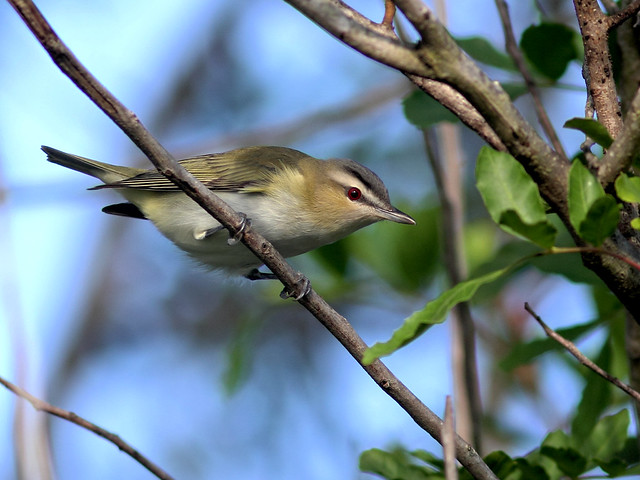
Some flycatcher species came in early, notably the Eastern Kingbird (September 5):
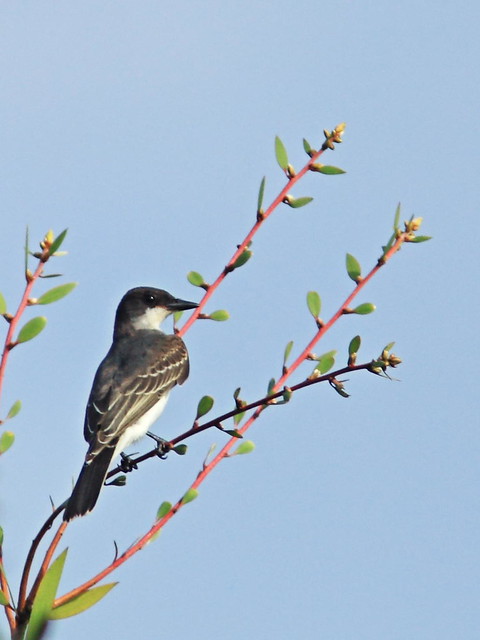
We are within the Great Crested Flycatcher's breeding range but do not see them until they wander after nesting (August 20):
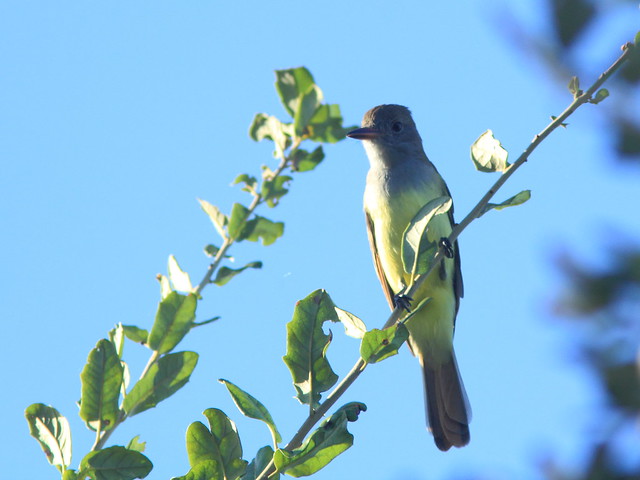
This is a diminutive member of the Alder/Willow Flycatcher complex in the Empidonax family. These two species can be distinguished from each other by their calls. Unfortunately, this specimen was silent (to my ears) but over a 7 day period readily responded to the recorded call of the Alder Flycatcher and ignored that of the Willow. Finally I obtained a recording of its voice, which clinched the identification as an Alder Flycatcher (September 9):
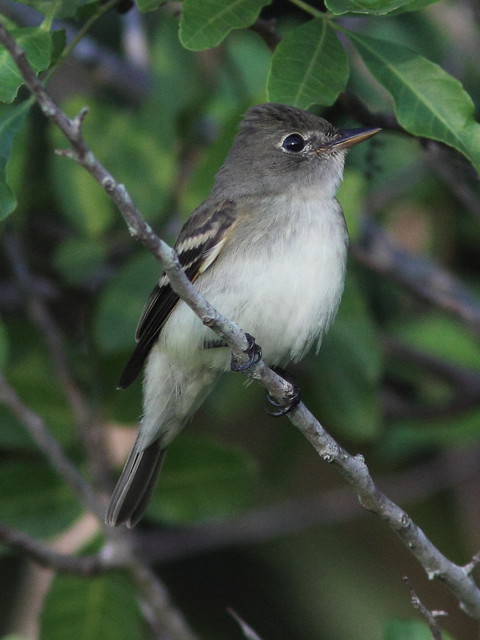
Blue-gray Gnatcatchers can become so numerous as to be a distraction, but their antics are fun to watch and they often are accompanied by other migrants (September 6):
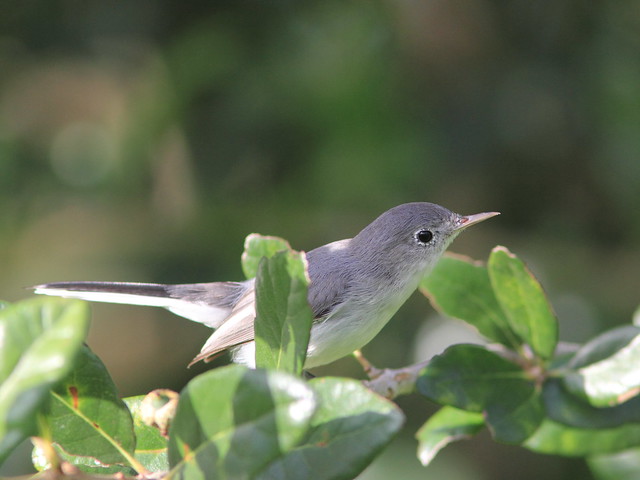
Other migratory treats so far have been a Merlin which I spotted as it roosted along the path in semi-darkness about 20 minutes before sunrise on September 18.
Because of the poor light (Camera settings were 300 mm lens at f/4.0, ISO 3200, exposure 1/40 sec, exposure compensation +2/3) my hand-held image of this small falcon is a bit soft :
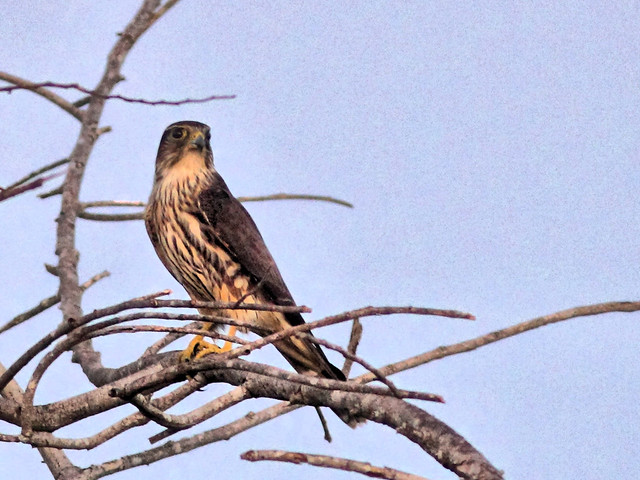
A Peregrine Falcon was an even more challenging subject, as it was nearly a quarter of a mile away (September 14):
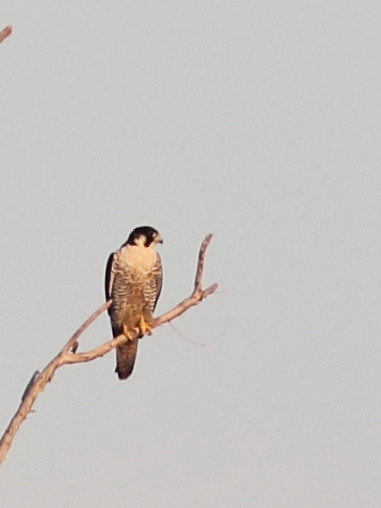
An immature Black Skimmer flew in on September 15, the first ever reported in our birding patch:
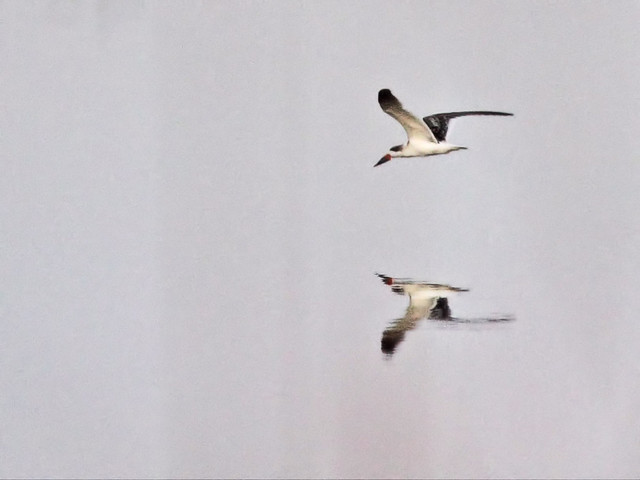
Mockingbirds alerted me to the presence of an immature Baltimore Oriole by chasing it out into the open on September 16:
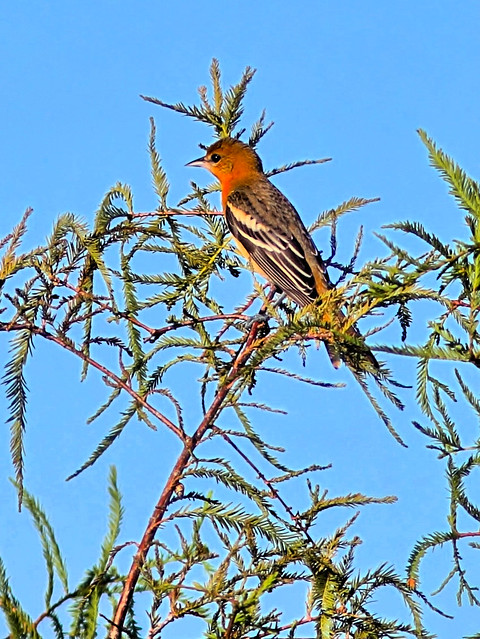
A European Starling had a vociferous confrontation with an exotic bird that probably "migrated" from its cage (September 3):
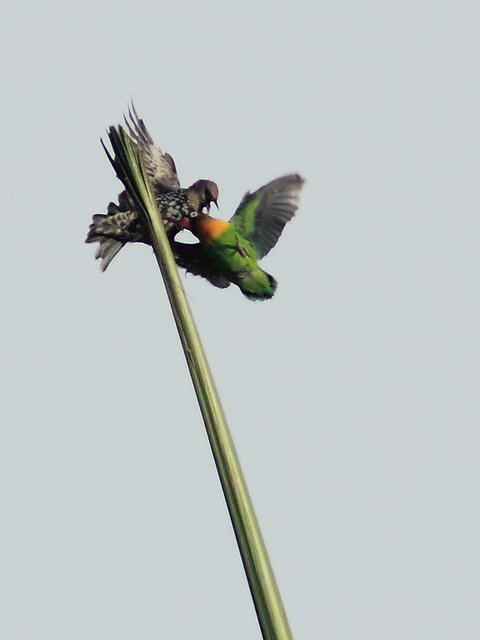
It was a Yellow-collared Lovebird, native of east Africa (also known by a variety of other names in the pet trade):
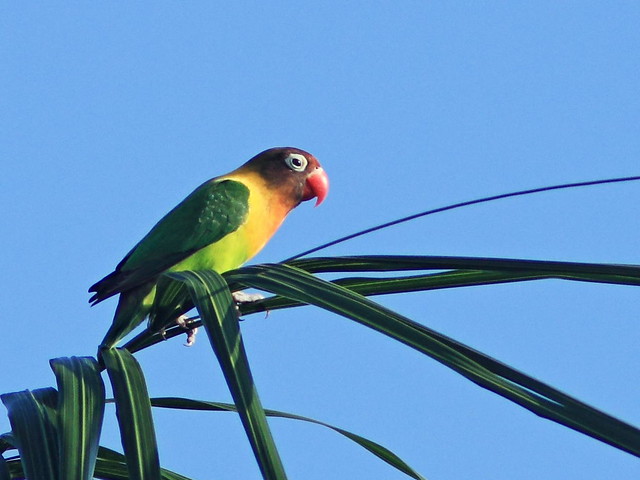
Not to be overlooked, Monarch butterflies are passing through on their multi-generational pilgrimage to Mexico. This one poses on a Duck Potato flower (September 17):
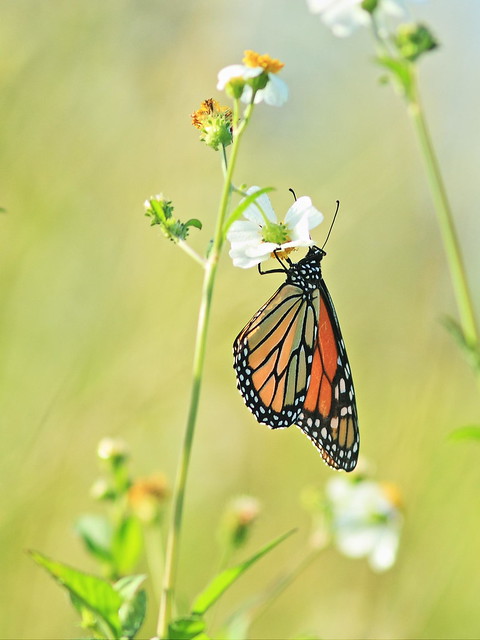
Here is an earlier photo of a Monarch, accompanied by a honeybee, on Ixora blossoms (January, 2015):
